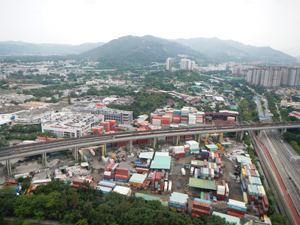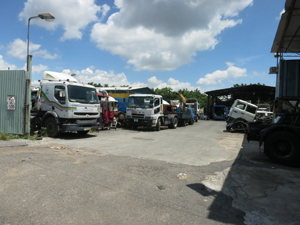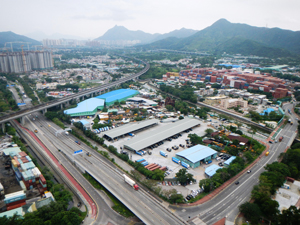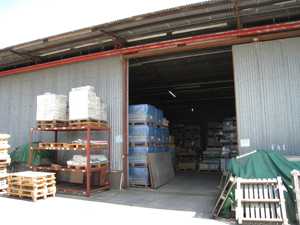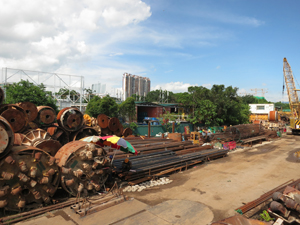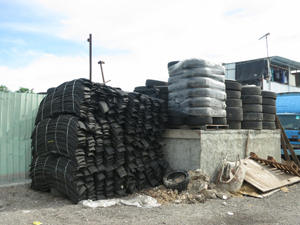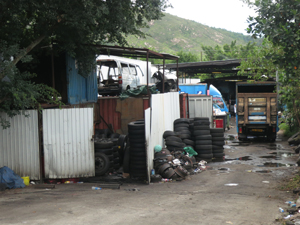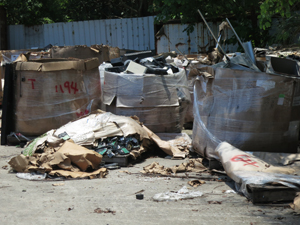Developing brownfield sites
|
The Policy Address this year mentions the progress of several planning studies which involve brownfield sites, covering areas in the North District and Yuen Long such as Hung Shui Kiu and Yuen Long South. As the issue has sparked considerable discussion in the community, I would like to take this opportunity to talk about our work in this regard. As mentioned in My Blog previously, currently there is no formal or standard definition of brownfield sites. The term generally refers to agricultural or rural land in the New Territories which is deserted and has been changed for open storage, container yards, depots, rural industries and recycling yards, etc., of which the uses are incompatible with the surrounding environment. Most of these sites are privately owned, and some include squatter households and agricultural activities, often resulting in a messy and fragmented land use situation. These brownfield sites are mainly found in flat parts of the North West and North New Territories. There are different business operations on brownfield sites. Although not really technologically advanced, they play a role supporting Hong Kong’s various industries, including port backup, container storage, logistics operations, wastes recycling, parking and vehicle repairs, and storage of construction materials and machinery. All these are integral to the livelihoods of many people. It is indeed a challenging and difficult task to consolidate and develop such sites properly through planning while allowing room for these economic activities to continue their operations. It is our hope that through comprehensive planning for the region we can provide adequate supporting infrastructures (e.g. roads, drainage and sewerage) and better community facilities (e.g. hospitals, schools, parks and open space), so as to release as much land as possible for high-density development. Apart from housing, sites for economic activities will also be reserved to provide other jobs opportunities. Meanwhile, we have to minimise the impacts on existing village clusters in these areas. Later this year, we will launch the Hung Shui Kiu Stage Three Community Engagement activities. The Government is exploring feasible measures such as relocating some brownfield operations to multi-storey buildings. We understand that some industries may have special requirements on the space for operation. In this regard, the proposed multi-storey buildings will be different from general buildings and will cater for the actual needs of these industries, such as incorporating larger operating space, specially designed passageways, etc. This type of multi-storey building will also have extra headroom, wider vehicular access and sufficient turning space for lorries and container trucks. At the same time, we understand that some businesses require the use or storage of particularly large machinery and are not suitable for relocation to multi-storey buildings. As such, it would be a complicated process from the actual planning and provision of supporting facilities to the implementation of measures. Given the scarcity of land in Hong Kong, the community should also consider seriously whether some of these businesses should be retained. Apart from the aforementioned challenges and difficulties, as with other large scale development projects the development of brownfield sites has to go through planning and engineering studies, various statutory processes and other required procedures. During such studies, various stages of public consultation are required to enable the public and stakeholders to express their views and suggestions. The studies will include detailed technical assessments of various aspects, such as the environment, transport, drainage, sewerage, water supply and air flow, all of which would take at least three years to complete. The statutory planning procedure, including the amendment of the Outline Zoning Plan (OZP), will begin after we have devised the development proposals on the basis of the results of the planning and engineering studies. At the same time, funding approval has to be sought from the Finance Committee of the Legislative Council for the detailed engineering design. Once the approval of the OZP has been obtained, we will proceed with the statutory procedures such as the gazettal of road works, land resumption and clearance, as well as other procedures including registration of and, if eligible, the provision of statutory compensation, ex-gratia allowance and rehousing for the affected people. Furthermore, the Government would have to seek funding approval from the Finance Committee once again for site formation and other related infrastructural works. In conclusion, the whole process of developing brownfield sites from the initial study to the point of building houses cannot be completed overnight. Therefore, for land supply in the short and medium terms, we have to continue to take forward a wide range of work such as land use reviews, rezoning of the some 150 sites including Green Belt sites, and increasing development density as appropriate, in order to cope with the public’s pressing demand for public housing, property purchase and change of property, as well as other social and economic development needs. |
|
25 January, 2015
Back